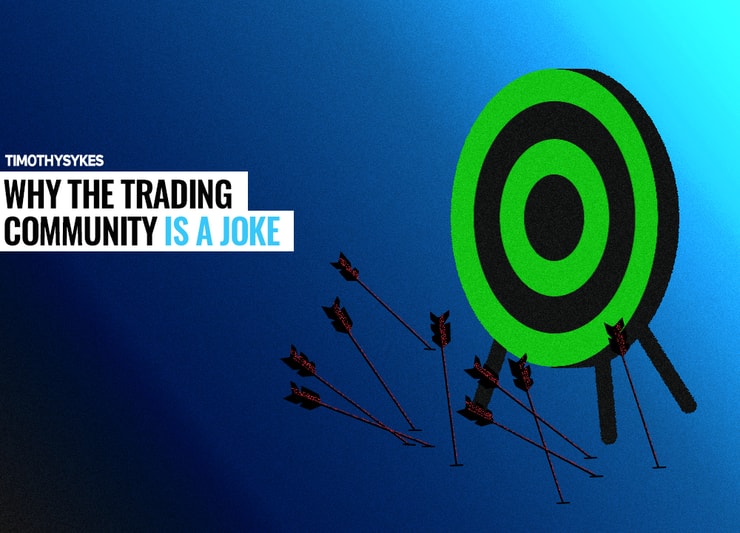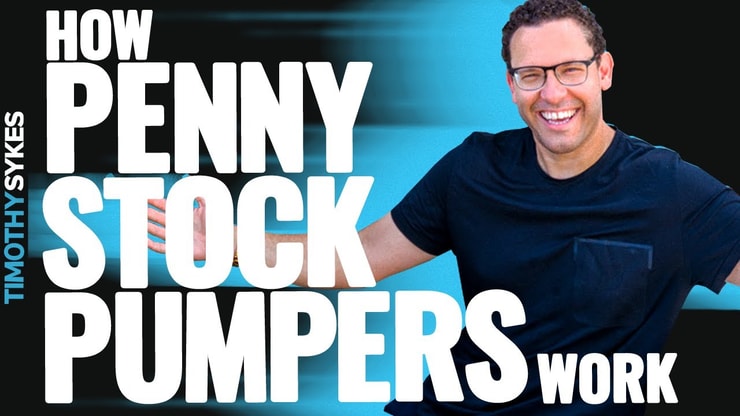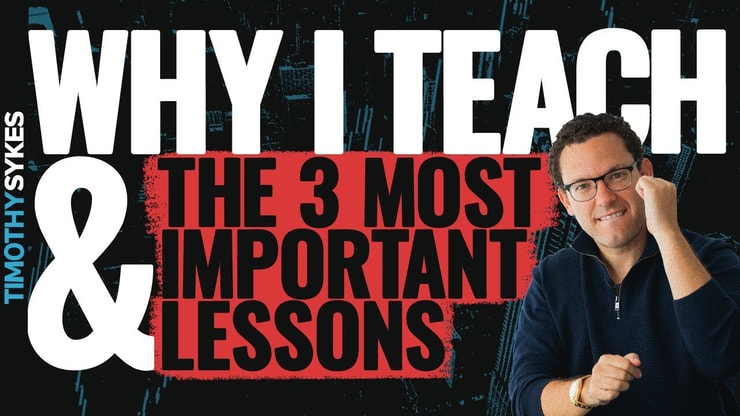The trading community is like a bad joke with a bad punchline. That’s not good news for newbies…
Sadly, too many newbies at home during the pandemic have a get-rich-quick mentality. Looking for a way to make ‘easy’ money, they see the insane market and open a trading account.
Check this out. It’s crazy…
E-Trade reported record trading in the second quarter: “We generated greater retail organic asset growth in the first half of this year alone than in the previous two years combined, and generated more retail organic account growth than the previous five years combined.”
Charles Schwaab issued a similar report. The broker added 1.6 million new accounts and managed 1.54 million trades in the second quarter. That’s an increase of over 100% from Q2 2019.
And don’t even get me started on the Robinhood trading community. In a May blog post, the broker reported adding three million new accounts in the first four months of 2020. Gamification of trading apps and selling order flow is a profitable venture.
Table of Contents
The Online Trading Community: A Risky Joke
The problem is, all these newbie traders are low-hanging fruit for shady Twitter pumpers. All too easily they believe in hyped-up companies.
Want to trade but not sure where to start? Join me on July 31 from 9 a.m. Eastern for an all-day live-trading and Q&A webinar. There’s no better way to learn than to look over my shoulder while I trade. Gain insight into my thought process and ask questions. PLUS: Your investment gives you access to a full year of Market Mastery trading webinars.
Join Me for Market Mastery
You can achieve ANYTHING you set your mind to, it's not you vs. the world, it's you vs. you & to truly succeed, you must learn strategy, rules, & self-discipline. It's my honor to teach rules I learned the hard way over 20+ years, but I can't guarantee you profits, just education
— Timothy Sykes (@timothysykes) July 23, 2020
When I try to help newbie traders, to educate them, it leads to a whole lot of hate. Recently I received this message from one of my students…
5:17 PM Shaneomac → timothysykes: “Tim I have never really followed the trading world online but have started to lately. I see what you mean now with all sorts of haters, etc. You are more well known that i thought lol. Anyway, its funny because they are ALL making up stories etc. Makes me very happy to understand what you do here for people. Thanks man […] much appreciated.”
I’m grateful that some people get it. Others find it difficult to face the facts. So let me offer a dose of harsh reality…
Is Day Trading Profitable?
Most traders lose. If you read enough books or articles about trading you’ll see a percentage rate of 90% thrown around a lot.
So is 90% accurate? It’s likely conservative. One study shows that more than 80% of day traders lose. But when you factor in commissions, taxes, and research, that percentage goes up. Which is probably why it’s estimated that 90% of traders lose.
But let’s get real. Because if 10% are profitable, the percentage of traders who make a decent living is lower. One academic study even called trading “hazardous to your wealth.”
Time to wake up from your bubble $DIA $SPY $QQQ market safety blanket all you Robinhooders/pump chasers, now you're learning the hard way why 90%+ of traders lose and it all could've been avoided had you studied & not trusted shady promoters who can't show all trades/real names!
— Timothy Sykes (@timothysykes) July 23, 2020
Less than 10% of traders are profitable enough to make a living. Those aren’t good odds. And it’s exactly why I’m so focused on teaching and transparency. Too many newbies jump in with little or no education, follow idiots on Twitter, and fall for…
The Fallacy of Day Trading Daily Profits
Again and again, I tell students to focus on the process. When you focus on the money it leads to bad trading. Start small, focus on the process, and build your knowledge account.
If you’re brand new to penny stocks, start with my FREE penny stock guide.
Learn the rules. (I trade with these rules.) Learn the nuances. Gain consistency and hone your skills. One bad trade can wipe out days, or even weeks, of profits … if you trade risky setups. Don’t get me wrong, you will have losing trades and losing days.
My top students and I have unprofitable days. Or days with very low profits. That’s OK. We focus on the process. If we make mistakes, we learn from them. And we adapt.
That said…
More Breaking News
- Transocean Stock: Storms Ahead?
- Equifax Stock Soars: Time for a Buy?
- OBIO Stock Drifts: Analyze or React?
Transparency Rules in Our Trading Community
The reason we created Profit.ly is because the industry is full of fake trading gurus who don’t share every trade. They might show you end-of-month screenshots, but they don’t show every detail.
I share ALL my trades. The Twitter pumpers won’t show a single trade. They don’t even use their real names on their accounts. So before you believe anyone, ask to see every trade.
Then ask them what, exactly, they’re teaching you. This is important. They love to say, “This stock is going to the moon!” Then they tell you they’ve done their due diligence and that they know what they’re talking about.
They’re lying. They’re not teaching you to trade OR invest. They’re scamming you into holding and hoping.
So would it be better for you to use a professional money manager? At least they have training and a fiduciary duty to try to manage your money well.
Here’s the problem…
70% of Fund Managers Trail the S&P 500
In 2019, 70% of domestic equity funds underperformed compared to the S&P Composite 1500. Seems crazy, right? But it’s based on a yearly study by the S&P that’s been going for two decades.
Even worse, the annual returns for the S&P 500 from 1957 through 2018 are only around 8%. So when fund managers beat the benchmark, it doesn’t necessarily mean they’re doing great.
S&P also publishes a persistence scorecard. Of the top quartile U.S. equity funds in 2015, only 0.18% of them stayed there through 2019. More than a third (39%) either liquidated or completely changed their investing style.
The Truth About High-Profit Trading Patterns
I trade the same patterns I’ve been trading for the last 20 years. But I want to make one thing clear…
Just because you recognize the patterns doesn’t mean you’ll be profitable. This is another reason why the trading community is a joke.
Some only pump. Others pump and tell you how much due diligence they’ve done. Then there are people who say the pattern is important.
I’m not saying patterns aren’t important. Again, I trade the same patterns again and again. But if that was my ONLY focus I don’t think I’d be nearly as profitable. With every trade, I consider seven indicators. Yes, pattern/price action is one indicator. And I often mention it in my trade commentary.
But I base everything on the…
Sykes Sliding Scale
The Sykes Sliding Scale (SSS) is my framework for planning trades. I didn’t consciously use it at the beginning of my career. It came much later. When I started teaching, I needed a simple way to explain all the different factors I think weigh.
You can learn the Sykes Sliding Scale with my “Trader Checklist Part Deux” DVD. Discover how to build a watchlist, which catalysts can be most reliable, and how to grow an account over time.
For a basic introduction to the Sykes Sliding Scale, read “The Complete Penny Stock Course” (see Chapter II.11 Sykes Sliding Scale, page 235.)
My point is that if you just follow alerts or focus only on patterns, the risk you take is incredible. Those morons pumping stocks every day on Twitter take advantage of uneducated newbies.
Don’t get me wrong…
I want the pumps to go as high as possible. If you know a promoter, send them a fruit basket so they work harder. They help create the volatility my students and I trade.
But it’s my duty to educate you and help you understand what’s happening. Learn to trade the pumped stocks and recognize the patterns. But don’t invest in these companies — they’re junk. Just like most traders lose, most penny stock companies fail.
How Penny Stock Pumpers Work
Does that mean every company will fail? Could you get lucky and be in on the ‘ground floor’ of the next Microsoft? Sure. But your odds are better going to Vegas.
Unfortunately, too many newbies fall for the fake trading gurus.
WARNING: Fake Trading Gurus Will Lead You Astray
These ‘gurus’ claim to help new traders for free, but their entire approach is a house of cards. “Let’s do this! We’ll all work together to keep this stock going.”
They’re pumping companies bleeding cash, with no revenue, and red flags all over their SEC filings. Risk management is non-existent to these so-called gurus. That’s because they’re promoters. They don’t have your best interest at heart. It’s crucial you understand the truth about promoted penny stocks.
The Trading Community vs. My Top Students
The reason I have so many haters and doubters is because I cut through the BS. I make these idiots look like the fools they are — and it threatens them. So they tell lies about me and accuse me of doing things I’d never do. Why? To get their newbie followers all riled up.
But no matter how many times anyone asks … they won’t show their trades. It’s crazy. Show me every trade, every detail. Entry, exit, position size, percent gain or loss — it’s not difficult. But they won’t do it. Because they’re full of BS.
Compare that to my top students…
My top students are fully transparent — they post their trades on Profit.ly. They show up every day and answer questions in chat. (We do NOT allow pumping in my chat rooms.) The Trading Challenge mentors give webinars. Tim Grittani gave a webinar right after banking $272,000 on one trade last month.
Some of my students have podcasts. Check out TWIST, hosted by Matthew Monaco, Jack Kellogg, and Kyle Williams. Real information, real trading strategies, and real mindset tips.
‘I’ll See You on the Moon’ Is NOT a Strategy
No more than hold and hope…
It only takes a little bit of research to see the similarities in the charts. My haters and doubters are either too stupid or lazy to study or they’re the promoters.
I don’t win all the time. I lose roughly 25% of the time. But I trade using rules. My #1 rule is to cut losses quickly. And I NEVER invest in these companies long term. No smart trader should.
Why I Teach
My goal as a teacher is to be the mentor to you that I never had. I had to learn it all the hard way.
In that video, I mention my book “An American Hedge Fund.” Download it and read it. It’s free of charge.
It’s also important to emphasize that I donate 100% of my trading profits to charity. That way, teaching is my priority…
And I donate 100% of my trading profits to charity, teaching is my priority and it allows me to cut through the BS/de-brainwash people nicely too, study up
— Timothy Sykes (@timothysykes) July 23, 2020
What I Teach
I teach strategies that have worked for me for over two decades. It’s not rocket science, but you have to study. You need to test and tweak. Experience matters … So stay in the game long enough to get it. How? Learn risk management. And not from the so-called trading community. Learn from someone who really wants you to be successful.
Remember, Friday, July 31 is the next Market Mastery session. Get in now.
The Trading Challenge
The Trading Challenge is an investment in yourself and in your future. In strategies and skills that have worked for decades and still work today. It’s NOT easy. But you’ll learn to recognize the BS fast … like my student Shayne who sent me the message.
Are you ready to get to work? Apply for the Trading Challenge today.
What do you think about the trading community? Have you seen any of the online trading community BS I described in this post? Comment below, I love to hear from all my readers!











Leave a reply